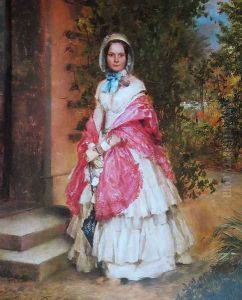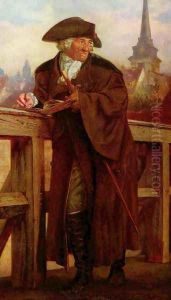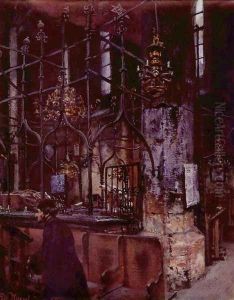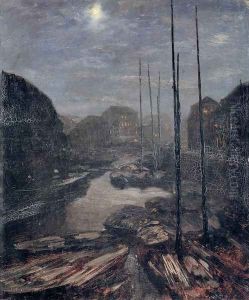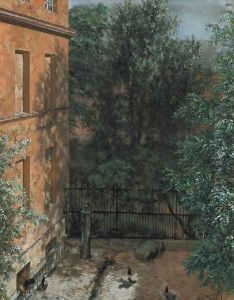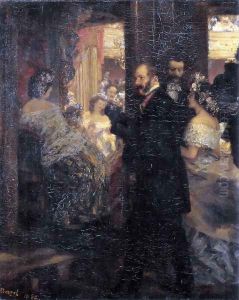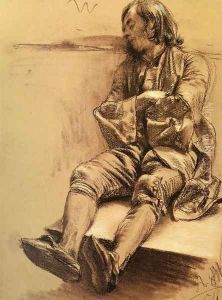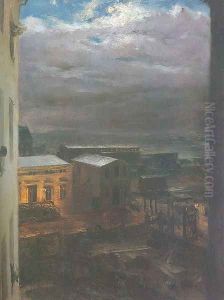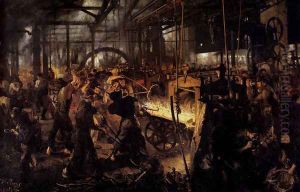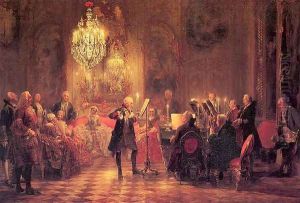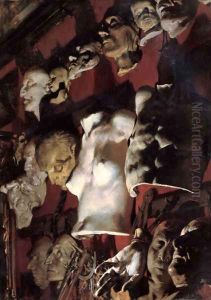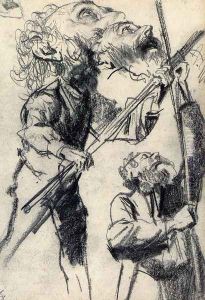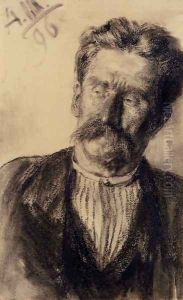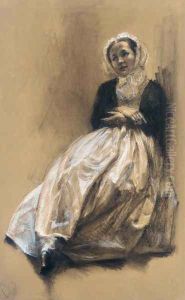Adolph von Menzel Paintings
Adolph Friedrich Erdmann von Menzel was a German artist noted for drawings, etchings, and paintings. Born on December 8, 1815, in Breslau (then in Prussia, now Wrocław, Poland), Menzel was one of the most prominent German artists of the 19th century, and he was a key figure in the Realist movement. His work was characterized by meticulous detail, a vivid sense of realism, and a commitment to depicting subjects as they were.
Menzel's father was a schoolteacher who encouraged his son's artistic talents. After his father's death in 1832, Menzel took over the family lithographic business, which provided him with a thorough grounding in drawing and printing. This experience would prove influential in his art, as Menzel often included intricate details in his compositions.
Throughout his career, Menzel exhibited a fascination with the social and industrial developments of his time. He was particularly known for his scenes of modern life in Prussia and his historical paintings depicting the life of Frederick the Great, King of Prussia. His masterpiece, 'The Iron Rolling Mill (Modern Cyclops)' (1875), is a prime example of his interest in industrial subject matter, offering a detailed and vibrant depiction of the toil and atmosphere of a foundry.
Menzel was a master of various techniques and worked on different scales, from small watercolors to large canvases. He was also an accomplished printmaker. His attention to detail extended to his studies of objects and interiors, and he had a talent for capturing the effects of light.
Despite his success and influence, Menzel lived a reclusive life, and his work was not well known outside of Germany during his lifetime. He never married and had very few close friends, dedicating most of his life to his art. However, his contributions to German art were eventually recognized, and he was ennobled in 1898 by Emperor Wilhelm II, which allowed him to add 'von' to his name.
Adolph von Menzel died on February 9, 1905, in Berlin. His legacy includes a vast collection of works that continue to be studied and admired for their detailed realism and historical value.




